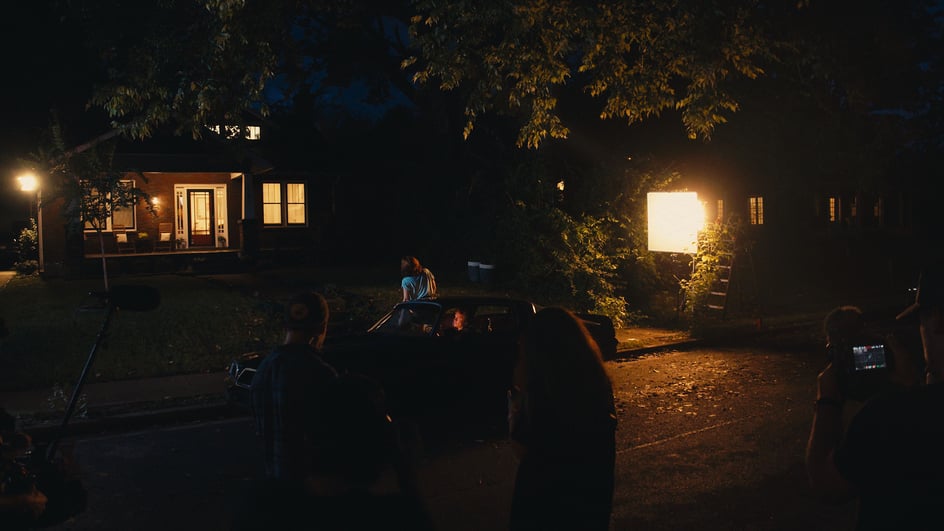
Oct 13, 2021
Think back to your most ambitious production thus far: a complex client project, a multi-part commercial campaign, a feature-length film, you name it.
Maybe it feels like it was just yesterday that you wrapped up post-production and celebrated that project’s release with your production team. Or maybe it actually was just yesterday.
Then again, maybe your most ambitious project is the one you’re working on right now.
Whatever the case, it’s a major accomplishment to challenge your creative limits, take on an intimidating new project, and pull it off.
Even though all productions share the same core stages of pre-production, production, and post-production, it’s impossible to replicate the same exact process for each new project. That’s because things can (and will) go laughably and unpredictably wrong.
When our Creative team set out to produce a four-part commercial campaign, we wanted to make light of this unpleasant reality (i.e., of things not going according to plan) since that’s something every creator can relate to.
This post offers a behind-the-scenes look at the making of our most ambitious campaign yet, but, more specifically, the steps you’ll need to take when producing a commercial campaign of your own.
Planning and producing a commercial campaign
Whether you’re producing campaign content for social media, TV, or some other digital channel, all campaigns share one thing in common: the end goal is to successfully promote a brand, product, or service.
Naturally, this adds an extra layer to the entire production process.
Let’s say, for example, that you’ve been hired by a brand to make a campaign for an upcoming product launch. Not only are you working with camera operators, producers, and other crew members, you’re also in constant communication with the brand.
To create content that the brand and their audience will love, there are a few pre-production and production steps you’ll need to take.
1. start with a broad concept
Maybe you work with a different client every week. Or maybe, like our Creative team, you produce campaigns in-house for the same brand all the time.
Either way, it’s important to ask and answer the following questions when brainstorming ad concepts for upcoming campaigns:
What is the intended message? Who is the target audience? How and why should they take action after watching the ad?
For our Creative team, we knew we wanted to make a four-part commercial campaign for our filmmaker audience. From there, we developed a core message for the entire campaign: “Filmmaking is hard — but finding the perfect music doesn’t have to be.”
Our campaign’s broad concept was simple: each ad would open with a classic movie scene that would be interrupted by some production problem (i.e., a tripped circuit breaker, a stalled car, a fallen overhead light, etc.).
The campaign message would be delivered and Voilà! the scene would play out exactly as planned.
This initial concept is what we used to build out the entire campaign and also make sure that each of the ads had a cohesive message and goal.
Once you know the broad concept for your campaign, you have the baseline you need to start shaping the idea into something more specific.
2. Fine-tune the concept and story arc
Before you can do anything else (i.e., write the script, treatment, shot list, etc.), you need to hash out the details of your campaign concept. This process can take time, especially if you plan on making multiple ads.
As a general rule, each ad in a commercial campaign should do two things:
- Work alongside the other ads to reinforce your collective broad concept, and
- Make sense to viewers as stand alone ad content.
In other words, if someone saw one ad on social media, they should be able to understand the meaning without needing to see the other ads too.
After deciding on our main concept, our team’s next step was to choose the four classic movie scenes we wanted to replicate. This is what we landed on:
An 80's breakup scene
A diner scene
A little league baseball scene
By taking our initial idea and making it more specific, this filmmaker campaign immediately started to come together. We talked through each ad’s narrative arc and then were able to move forward with the rest of pre-production.
3. Work out the film logistics
Once the creative concept is fully realized, the focus shifts toward making those crucial pre-production documents that we all know and love. This includes the script, the shot list, the gear list, and the treatment (i.e., the everything-but-the-kitchen-sink document).
If you’ve been involved in productions before, this part of pre-production will come naturally to you. And that’s because we all go through the same motions of booking locations, hiring talent, and working out the filming logistics.
Not to mention, we all contend with time and budget constraints.
To film the four ads for our campaign, our team had two days set aside for production in four different locations. There was almost no room for error, which meant that we needed to have a strong production game plan.
But even with meticulous planning and preparation, we still encountered last-minute issues on the day of the shoots. This brings us to the final takeaway from our commercial production experience: be prepared to improvise.
4. Be prepared to improvise
So many variables are beyond your control when you make the transition from pre-production to production. And no matter how well-prepared you are, it’s impossible to anticipate every single potential issue you could face.
While you might bring extra batteries or backup gear to set, you have absolutely no say in whether or not your talent calls in sick or it starts raining in the middle of your outdoor shoot.
In these situations, your only option is to assess the problem, narrow down on possible solutions, and then adapt as quickly as possible.
To offer an example, one of the issues our team ran into on Day 1 of this commercial shoot was inclement weather. We ended up rewriting the entire ad script, going back to the original script when the rain cleared, and then filming with less time than planned.
(Sounds like a great time, right?)
This all goes to show that even when filming conditions aren’t ideal, production still has to go on one way or another.
Where to find more filmmaking tips
Improving your production skills and developing new ones is an ongoing process, whether you’ve been in the industry for two months or 25 years. If you’re interested in learning more filmmaker tips and tricks, check out the Soundstripe YouTube Channel.
